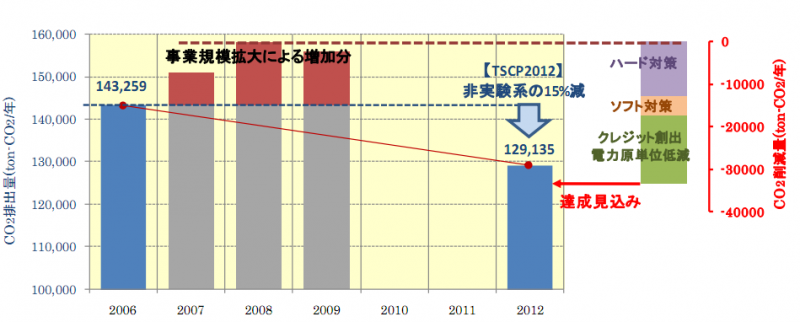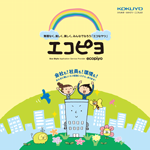1月19日(第12週)住明正先生January 19, 2012 Talk by prof. Akimasa Sumi
公開日:2011年12月20日
投稿者:fukui
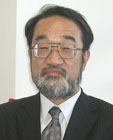
住 明正 Sumi, Akimasa
東京大学 サステイナビリティ学連携研究機構
地球持続戦略研究イニシアティブ統括ディレクター・教授
昭和46年6月 東京大学理学部物理学科卒業
昭和48年3月 東京大学大学院理学研究科物理学専攻修士課程終了
昭和48年4月 気象庁東京管区気象台調査課
昭和50年4月 気象庁予報部電子計算室
昭和54年2月 ハワイ大気象学教室助手
昭和56年5月 気象庁予報部電子計算室
昭和60年4月 東京大学理学部地球物理学教室助教授
平成3年7月 東京大学気候システム研究センター教授
平成7年10月 東京大学気候システム研究センターセンター長を兼任(16年3月まで)
平成17年8月 東京大学サステイナビリティ学連携研究機構地球持続戦略研究イニシアティブ統括ディレクターを兼任
平成18年11月 東京大学サステイナビリティ学連携研究機構・教授(特任教授を兼任)
主著
- 1986:気象における予測、予測(朝日出版社)
- 1993:気候はどう決まるか(岩波書店)
- 1999:地球温暖化の真実(ウェッジ選書)
- 2007:さらに進む地球温暖化(ウェッジ選書)
参考資料
- 地球温暖化の真実(環境の世紀より)
- 住研究室ホームページ
- 異常気象と地球温暖化(JICE技術研究発表会の特別講演)
- 京都議定書が投げかけた課題
- TIGS モバイルサイト「みんなでエコトレ!」のサービス開始
In this highly developed century, you have to watch out not only for sustaining relationship with your girlfriend but for sustainability science in order to sustain your global families. Why don’t you think about sustainability science, the very key academic theory to survive our earth as well as your precious relationships in the 21 KOMCEE with us? Sumi Akimasa, a chief director and professor of Integrated Research System for Sustainability Science, or IR3S is going to lecture on global warming and sustainability science.
When we’re casually talking about global warming, it’s very easy to think about the emissions of CO2 by automobiles or at industrial factories. There are many issues we have to tackle immediately, and this is just one of them. Before you participate in this lecture, it’s very helpful if you consider about a particular issue, the reason why it matters, and available solutions in the future or daily activities for individuals. Also, what is your impression on sustainability science when you hear it for the first time?
 Linking the lecture, you’ll be able to find the difference between your thought/the first impression and the fact comes from scientific surveys, researches and his speech. Maybe, you can find how to sustain good terms with your friends. We all hope you to learn about sustainability with us in this great opportunity.
Linking the lecture, you’ll be able to find the difference between your thought/the first impression and the fact comes from scientific surveys, researches and his speech. Maybe, you can find how to sustain good terms with your friends. We all hope you to learn about sustainability with us in this great opportunity.
(Report by Kitamura)
磯部先生予習記事Professor Isobe
公開日:2011年12月6日
投稿者:komcee2011
今回講演していただく磯部雅彦先生は、TSCP(東大サステイナブルキャンパスプロジェクト室)室長として、大学の省エネルギー化に取り組んでおられます。
講演に先立ち、TSCPとは何なのか、どのような活動をしているのかについてまとめました。
TSCPってなんだ
TSCP(東大サステイナブルキャンパスプロジェクト)とは、2008年に発足した全学的なプロジェクトであり、温室効果ガス排出削減による低炭素キャンパスづくりを当面の最優先課題とし、低炭素キャンパスづくりに取り組んでいる。
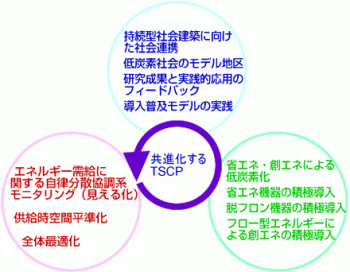
3つのコンセプト
・エネルギー需給に関する自律分散協調(見える化)
・省エネルギー・創エネルギーによる低炭素化
・持続型社会建設に向けた社会連携
を効果的かつ効率的に同時進行する“共進化システム”を構築し,大学という研究・教育機関のモデルケースとして先導的に実現することを目指している。
また、それに加え国内外の大学間のネットワークを通じてこれらの試みを世界的な大学の動きにつなげていくと共に、その動きを社会へと波及させていく。さらに社会における低炭素型の技術と対策の普及をリードすることによって、低炭素社会実現に向けて経済的な波及効果をもたらすことをめざしている。
TSCPアクションプラン
TSCPでは低炭素キャンパスに向けた具体的な目標としてアクションプランを作成している。
TSCP-2012(2008〜2012年度末)
2006年度に比べ2012年度には非実験系の二酸化炭素排出量の15%削減を目標にしている。二酸化炭素以下の1〜4を通じて排出削減を行う。
- 電力計設置(見える化)による教育・研究活動の増加にともなう排出量増分の抑制
- 省エネ機器への更新支援
- 投資回収年数が機器更新年数の半分以下のもの
- 年間CO2削減量と初期投資額との比が大きいもの
- 回収年数が4年を超える分は,初期投資の補助も考える
- 大型熱源系の省エネ化により約6%削減(初期投資額合計約5億円)
- 照明・個別空調・冷蔵庫などの更新により約7%削減(初期投資額合計約26億円)
- 大量調達による省エネ機器導入普及モデルの作成
- 初期投資が回収でき,その後は光熱水費が削減できるその他対策も含め実施
既に、各種機器の導入量や各建物のエネルギー消費動向の調査が行われており、そこから得られたデータをもとに優先順位の高い場所から機器更新や運用改善が行われている。
TSCP-2030(2012〜2030年度末)
TSCP2030では、2006年度に比べ二酸化炭素排出量の50%削減を目標とし、2012年までにその具体案を検討する。現段階では、TSCP2012の期間中においては、対象とならなかった機器を含め、機器劣化更新時を捉えた高効率化、コストを含めて実用段階になかった技術の導入、更に創エネルギー(太陽光発電など)を本格化させていくとしている。
参考
(文責:福井)
Professor Isobe and his work in TSCP
Our group is preparing for the lecture by Professor Masahiko Isobe, Head of Tokyo University Sustainable Campus Project (TSCP).
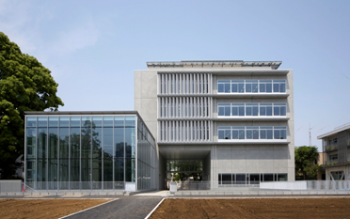 The purpose of TSCP is to show how to realize the sustainable society by attempting the latest technology or making and trying new technologies in Tokyo University. TSCP is now especially struggling to reduce the emission of the greenhouse effect gas. They made the target of 15% reduction of CO2 emissions by 2012 compared to 2006. And until 2030, they are aiming to cut the half of CO2 emissions compared to 2006.
The purpose of TSCP is to show how to realize the sustainable society by attempting the latest technology or making and trying new technologies in Tokyo University. TSCP is now especially struggling to reduce the emission of the greenhouse effect gas. They made the target of 15% reduction of CO2 emissions by 2012 compared to 2006. And until 2030, they are aiming to cut the half of CO2 emissions compared to 2006.
TSCP succeeded in diminishing the amount of energy consumption in many methods such as shifting all the fluorescent light in some university buildings to more efficient LED light, introducing sensors and the AI (artificial intelligence) to turn off the unneeded lights and so on.
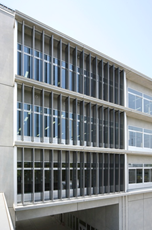 This summer (in 2011), a new building called the 21 KOMCEE (Komaba Center for Educational Excellence) has appeared in Komaba Campus. TSCP led to make the 21 KOMCEE introducing many unique technologies for the comfortable study circumstances and reduction of energy consumption. For example, underground water is used to keep the temperature of rooms comfortable, movable louvers are placed outside the windows to select whether sunlight is reflected or permeates. The AI studies from the past experience and helps the students to use the room effectively.
This summer (in 2011), a new building called the 21 KOMCEE (Komaba Center for Educational Excellence) has appeared in Komaba Campus. TSCP led to make the 21 KOMCEE introducing many unique technologies for the comfortable study circumstances and reduction of energy consumption. For example, underground water is used to keep the temperature of rooms comfortable, movable louvers are placed outside the windows to select whether sunlight is reflected or permeates. The AI studies from the past experience and helps the students to use the room effectively.
The 21 KOMCEE is not only a great place for students to study but also a touchstone for making the sustainable society. Judging from the results of introducing technologies in the 21 KOMCEE, other buildings for the sustainable society will be designed and constructed in the future.
(Report by Aoki)
12月1日(第7週)大岡龍三先生紹介December 1, 2011 Talk by prof. Ryozo Ooka
公開日:2011年11月28日
投稿者:sakaguchi
大岡龍三 Ooka, Ryozo
東京大学生産技術研究所教授
大岡先生は、21 KOMCEEの地下水・地下熱を利用した冷暖房システム構築を担当されました。
略歴
京都大学 大学(工学部 建築学科) 1989 (卒業)
京都大学 修士(工学研究科) 1991 (修了)
東京大学 博士(工学系研究科 建築学)
博士(工学) 東京大学
1993-1998 東京大学生産技術研究所 助手
1998-2000 福井大学工学部 講師
2000-2001 福井大学工学部 助教授
2001-2006 東京大学生産技術研究所 助教授
2007-2009 東京大学生産技術研究所 准教授
2009.08- 東京大学生産技術研究所 教授
日本建築学会(サステナブルビルディング小委員会主査、ヒートアイランド小委員会幹事、都市気候モデリングWG主査、総合論文誌 第4号編集委員)空気調和・衛生工学会(国際関係委員会、大会実行委員会委員、学会賞技術審査委員、SHASE技術フェロー)日本風工学会、日本気象学会、エネルギー資源学会、日本流体力学会(2007年年会実行委員会幹事)、日本予防医学リスクマネージメント学会(理事)
研究テーマ
- ヒートアイランドの解析と制御
- 都市の大気汚染現象の解明と制御
- 都市のエネルギー資源の最適システム設計
- 自然エネルギーを利用した省エネルギー型空調システムの提案
- 都市の火災延焼予測モデルの開発
参照サイト
Realizing Zero Energy Building by utilizing geothermal energy
The term “Zero Energy Building” is defined as “a building in which net energy consumption is nearly zero.” Recently, many developed countries have taken an action to realize ZEB that is expected to be helpful to solve environmental problems. In Japan, Prof. Ooka’s team studies various systems to achieve it.
 What is most important in zero-energy buildings is to “control” the entire building. With sensors and operation systems, the amount of energy consumption is kept at minimum. In addition to the design of the building, changing attitudes of people towards the environment is also important to seek ZEB.
What is most important in zero-energy buildings is to “control” the entire building. With sensors and operation systems, the amount of energy consumption is kept at minimum. In addition to the design of the building, changing attitudes of people towards the environment is also important to seek ZEB.
Prof. Ooka has participated in constructing the 21 KOMCEE where this seminar is held. This building was designed in an attempt to accomplish ZEB by 2030 and it has some experimental tricks and devices.
One of these devices is to utilize groundwater for air conditioning. It pumps up groundwater deep under the building and the water will efficiently cool down or warm the ceilings that will subsequently modulate ambient temperature through radiation. The Radiation air conditioning system heats not the air around humans but human body directly, thus it can save energy for fanning the air. Other than that, there are many systems to seek ZEB in this building. For example, movable louvers automatically following the sun’s movement help to use sunlight and warmth more efficiently.
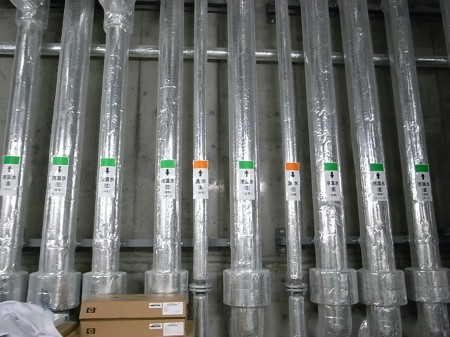
(Report by Sato)
10月27日(第4週)コクヨとのグループワーク@駒場October 27, 2011 Group Work with KOKUYO Furniture Co., Ltd.
公開日:2011年10月27日
投稿者:sakaguchi
きょうは、コクヨの方々+生産技術研究所野城研の院生さんがゼミにいらっしゃいます。
駒場KALSや21 KOMCEEのアクティブラーニング用の机・椅子やホワイトボードはコクヨの製品です。
野城研究室は21 KOMCEE建設計画のZEB(Zero Energy Building)実証事業としての側面にこれまで携わってきました。中でも、さまざまな省エネ技術をコンピュータ管理し、どこでどれだけ効率よくエネルギーが節約できているかモニタリングするAI(人工知能)の開発が特色です。
21 KOMCEEのスタジオ教室の入り口の所に小さな液晶パネルがあることに気付いた方もいるかもしれません。
これは21 KOMCEEに導入されているビル・マネージメントシステム(BMS)のインターフェースであって、AIには「学ぶクン」という名前がつけられています。21 KOMCEEでは随所に温度や照度、湿度などをモニタリングするセンサーが備え付けられており、そうした環境パラメータに応じて省エネルーバーや空調、照明をどのように自動制御すると、快適な状態を維持しながら効率よく省エネルギー化が達成できるかAIが学習していきます。
学習するのはAIだけではありません。「学ぶクン」は収集した環境パラメータをもとに、教室を使用する人たちに環境に配慮した最適な行動を提案する機能を組み込むことが予定されています。学生にうったえかけるコンテンツとしてはどのようなものを用意したらよいか、グループでディスカッションし、発表していきます。
- コクヨで開発・導入されている企業向けエコ活動促進システム「エコピヨ」
カタログをダウンロードすることができます。 - 「エコピヨ」プレスリリース
- 導入事例 環境省「STOP地球温暖化 エコ・アクション・ポイント」
- アメリカのFacebook用節電アプリ Opower
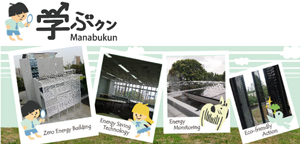 In the 21 KOMCEE, there are many types of equipment helpful to realize active learning, such as whiteboards with various sizes, and furniture with thoughtful devising. These items are produced by KOKUYO Furniture Co., Ltd. On 11/17, we students were given an opportunity to work with business persons attending the 2012 KOKUYO Fair through Skype. We shared ideas on what kind of activities MANABU-KUN should recommend students to do. (MANABU-KUN —“Mr. Study”—is an artificial intelligence (AI) which draw student’s attention to eco-friendly activities such as using stairs instead of using elevators).
In the 21 KOMCEE, there are many types of equipment helpful to realize active learning, such as whiteboards with various sizes, and furniture with thoughtful devising. These items are produced by KOKUYO Furniture Co., Ltd. On 11/17, we students were given an opportunity to work with business persons attending the 2012 KOKUYO Fair through Skype. We shared ideas on what kind of activities MANABU-KUN should recommend students to do. (MANABU-KUN —“Mr. Study”—is an artificial intelligence (AI) which draw student’s attention to eco-friendly activities such as using stairs instead of using elevators).
To find out eco-friendly activities, we tried to imagine our lifestyle and the environment in 2030 based on these in 2011, present. A lot of creative suggestions were made in this group work. Such suggestions and ideas are expected to be brought up more and more and adopted at the MANABU- KUN system.
Thus this system will help students take notice of their wasting of energy, and change their attitude towards the environment.
(Report by Hirashima)
10月20日(第3週)高見英樹 氏October 20, 2011 Talk by Hideki Takami
公開日:2011年9月27日
投稿者:sakaguchi
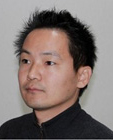
高見英樹 Takami, Hideki
文部科学省大臣官房文教施設企画部
施設助成課課長補佐
学校は公共施設の中でも大きな割合を占める身近な施設であるとともに、次世代を担う子どもたちの学習・生活の場でもあることから、そのエコ化を全国的に進めることにより、広く社会への波及効果が期待できます。本講義では、小・中・高等学校や大学などの学校施設のエコ化をどのように進めていくかについて、国や地方公共団体、大学等の取組を紹介しながら、皆様と議論をしたいと考えています。
2002年に入省後、学校安全や耐震化、教科書検定・採択、国立大学施設の中長期計画の策定などの業務に携わる。2011年4月より現職で、学校施設のエコスクール化などを担当。
一級建築士。
参考資料
- 「東日本大震災の被害を踏まえた学校施設の整備について」緊急提言(平成23年7月 東日本大震災の被害を踏まえた学校施設の整備に関する検討会)
- 「知の拠点 我が国の未来を拓く国立大学法人等施設の整備充実について」(平成23年8月 今後の国立大学法人等施設の整備充実に関する調査研究協力者会議)
参考サイト
高見氏が育児休業の経験をつづった、読売新聞ウェブでの連載記事です。
Mr. Hideki Takami, who belongs to the Ministry of Education, Culture, Sports, Science and Technology, is a member of the Eco-School Program. Eco-School means an ecological school which has some facilities suitable for environmental sustainability and commits ecological activity. In short, he is concerned with making policies to spread Eco-School.
The concept of Eco-School is made up of three important factors. The first is to build facilities which are friendly for both users and the environment. The second is to keep each facility available over the long term by utilizing natural energy technologies and so forth. The last factor is to make use of itself for the environmental education. By the way, why is Eco-School so important? There are three reasons.
 Firstly, it is effective for decreasing CO2 emissions from schools. They consume much energy among public facilities. Second, it is important for spreading the environment-friendly idea. Schools are not only places for pupils to study but also familiar facilities to local people, so schools have a big influence on their attitudes. Lastly, it can lead to a disaster measures. Schools are regularly assigned as emergency evacuation centers. Thus, natural energy, which could be used on occasional blackouts, is important.
Firstly, it is effective for decreasing CO2 emissions from schools. They consume much energy among public facilities. Second, it is important for spreading the environment-friendly idea. Schools are not only places for pupils to study but also familiar facilities to local people, so schools have a big influence on their attitudes. Lastly, it can lead to a disaster measures. Schools are regularly assigned as emergency evacuation centers. Thus, natural energy, which could be used on occasional blackouts, is important.
However, the budget for Eco-School Program is limited because of the severe financial condition these days and that limitation is a large obstacle to the project.
(Report by Saito)
1月12日(第11週)奈尾信英先生紹介January 12, 2012 Talk by Dr. Hideaki Nao
公開日:2011年9月27日
投稿者:sakaguchi
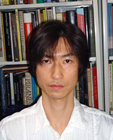
奈尾信英 Nao, Nobuhide
東京大学大学院総合文化研究科講師
今日、都市人口の増加とそれに伴う都市の貧困化は、世界規模で展開しています。われわれが住んでいる都市環境を持続させるためにはどうすればよいのか、本講義を通して考えていきましょう。
1966年、東京生まれ。
東京大学大学院工学系研究科建築学専攻博士課程(建築意匠)修了。博士(工学)。
専門は、建築設計学:都市建築意匠論・都市建築空間史・図学史。
東京大学大学院工学系研究科建築学専攻客員研究員を経て、現在、東京大学大学院総合文化研究科広域科学専攻広域システム科学系情報図形科学部会(図形科学Iおよび図形科学IIを担当)。青山学院大学理工学部、芝浦工業大学工学部、東京電機大学理工学部、東京家政大学家政学部、日本大学生産工学部、国士舘大学21世紀アジア学部、国立東京工業高等専門学校情報工学科、兼任講師。
大学共同利用期間法人人間文化研究機構総合地球環境学研究所研究メンバー。
参照サイト
オランダのサイトを中心に、都市建築に関する参照先を紹介していただきました。
- http://www.oma.nl/
- http://www.unstudio.com/
- http://www.mvrdv.nl/
- http://www.west8.nl/
- http://www.mecanoo.nl/
- http://www.wielaretsarchitects.nl/
About Urban design with Dr. Nao

Our team gathered information about Dr. Nao. He is specialized in architecture in the University of Tokyo, and these days he is engaged in urban design. He wrote a report named “Urbanism Projects of the 90’s.“In this report, he studied urbanization in Rome, Berlin, Paris, and so on. Reading this report, we realized that he valued both artistic design and sustainability.
He has given a message saying that today, the number of people living in cities is increasing and consequently the poverty would get worse in many parts of the world. He invited us to ponder how we can maintain the environment of the growing cities.
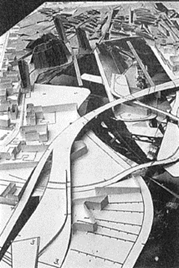
Urban designs which are caring the environment and historical scenery have become more successful in Europe than in Japan, so I would like to compare these several countries in Europe with Japan, and see the circumstances of the cities in the Netherlands, confirming whether the theories I’ve learned can be applied to the real issues in cities.
(Report by Ikeda)
11月10日(第5週)田村正道氏紹介November 10, 2011 Talk by Masamichi Tamura
公開日:2011年9月27日
投稿者:sakaguchi
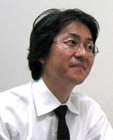
田村正道 Tamura, Masamichi
(株)類設計室 ディレクター
21KOMCEE(理想の教育棟)建設プロジェクトは、東京大学の先生方や職員の皆さん、そして私たち設計者を含め、多くの関係者による協働作業として進められました。21KOMCEE(理想の教育棟)の建築設計にあたっては、「アクティブ・ラーニング」「周辺環境との共存」「ゼロ・エネルギー・ビル」の3つをコンセプトとし、理想の教養教育の場にふさわしい空間デザインと環境技術のあり方を追求してきました。
ゼミ当日は、21KOMCEE(理想の教育棟)建設プロジェクトにおける思考と実現の軌跡を紹介し、それらを通して、人、環境、建築・都市計画の調和のあり方について、その一端をお話できればと思います。現代社会は、地球環境危機と循環型社会への転換、災害への備え、経済危機への対応等、多くの課題を抱えています。建築・環境分野のみならず、あらゆる仕事において、これらの社会的課題に真摯に向き合い、答えを出していくことが求められます。そのためには、自然の摂理に学ぶこと、歴史や先人の経験に学ぶこと、そうした学び続ける姿勢がとても大事なのではないかと感じています。
皆さんとお会いできることを楽しみにしています!
1962年 京都生まれ
1985年 東京芸術大学美術学部建築科卒業
1985年~類設計室、現在、東京設計室ディレクター
主な設計実績
東京大学工学部新2号館、同工学部新3号館
日本大学文理学部新教室棟、同生物資源科学部60周年記念棟
さいたま地家裁熊谷支部庁舎、甲府法務総合庁舎、浦安市立高洲小学校 など
参照文献・Webサイトなど
21KOMCEE(理想の教育棟)掲載誌
- 日経アーキテクチュア特別編集版 これからの学校2011(2011年6月25日発行)
- 日刊建設工業新聞2011年6月20日
類設計室
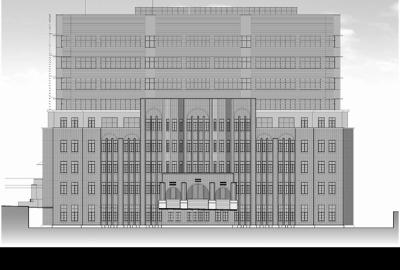 Mr. Masamichi Tamura is an architect of RUI SEKKEISHITSU Co., Ltd., who designed and supervised the construction of the 21 KOMCEE.
Mr. Masamichi Tamura is an architect of RUI SEKKEISHITSU Co., Ltd., who designed and supervised the construction of the 21 KOMCEE.
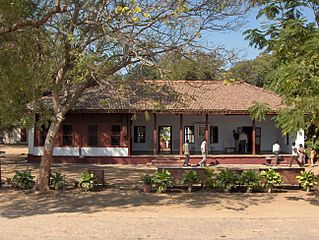
In order to design an ideal building for education, Mr. Tamura sought some hints in the history of universities. At the beginning, an institution for higher education was a place not only to learn, but also to live. At that time, learning and culture advanced dramatically by exchanging diverse ideas through the life in ashrams. The 21 KOMCEE is designed to be the environment like the root of higher educations.
The architectures also considered harmony of the 21 KOMCEE with other buildings in Komaba Campus. There are mainly 3 points to which the designers paid attention. First, it was designed to be a low building, and a basement was utilized in order to keep a good landscape of the campus. Second, the established position of the building was set to maintain the path of traffic in the campus. Third, the architectures and the constructors paid a lot of efforts to devise the shape and exterior in consideration for not cutting a large symbolic tree nearby the building but for harmonizing with it.
The leading-edge technology is applied to the 21 KOMCEE aiming at Zero Energy Building (ZEB). The air conditioning system using geothermal heat, lighting apparatus, double skin window system and more are controlled by the AI network which comprises the Building and Energy Management System (BEMS).
(Report by Kaneko)

